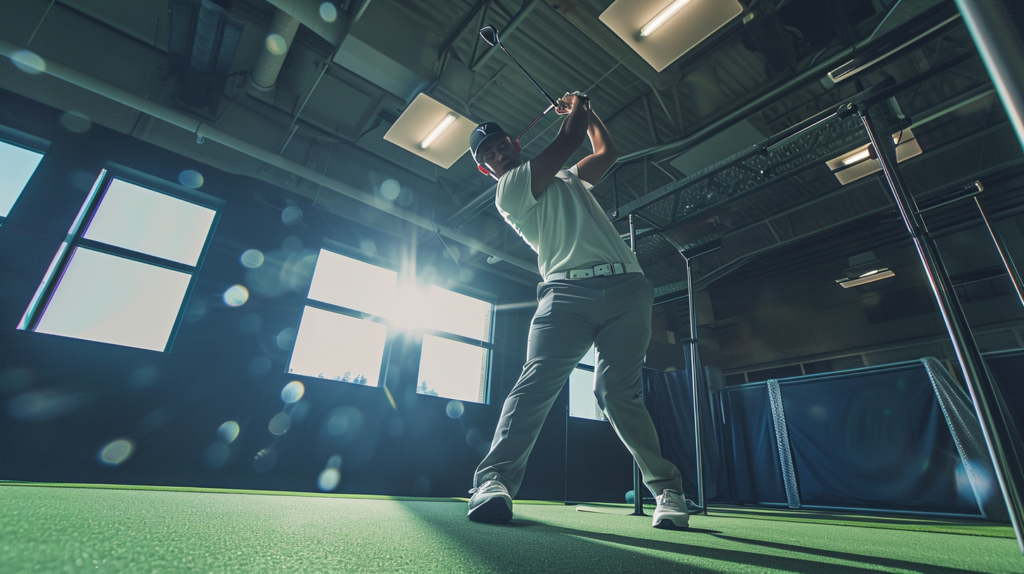With over 60 million global golfers and iconic major tournaments like The Masters, is golf truly considered an athletic sport or just a casual hobby?
Golf exhibits key traits like physical demands, established rules and competitive structures that qualify it as a sport in the modern sporting context rather than just a recreational pastime.
Let’s tee off and analyze how golf measures up as a sport.
Is Golf A Sport?

Yes, golf qualifies as a legitimate sport based on key criteria like requiring physical athleticism and skill, adherence to standardized rules and governing bodies.
Objective scoring systems determining winners through competition, and origins as a recreational pastime that evolved into professional competitive levels.
When analyzing golf against traditional metrics that define a sport, it stacks up: from demanding fitness and precision to intense training to sponsorship deals, golf mirrors recognized global sports.
While subjective perceptions persist of golf as merely relaxed recreation, modern professional golf objectively demands world-class athleticism.
Key Characteristics Of A Sport

A sport is generally defined as an athletic activity requiring skill and physical prowess, often of a competitive nature and done for entertainment. Most sports have certain key characteristics that set them apart as athletic pursuits and not just hobbies or pastimes.
These include that sports involve physical exertion and skill, have established rules and objective scoring systems and are considered recreational activities. Golf seems to meet many of the basic criteria that define a sport.
Involves physical activity and skill. Most sporting activities require players to be actively engaged in physical movement and skill demonstration.
Things like running, jumping, swinging, throwing are par for course. Sports also require some degree of athletic skill and hand-eye coordination.
Golf requires golfers to physically swing clubs, twist and walk long distances during the duration of play. Skill is essential to strike the ball well.
Has set rules and objective scoring/competition. Standardized rules and scoring structures differentiate games from sports.
Scoring allows competition based on measurable performance indicators. Golf has established rules that are followed by all players around the world.
Performance is measured by number of strokes taken per hole and total score. The player with the lowest number at the end wins.
Requires physical exertion and use of athletic prowess. True sports require fitness, endurance and use of athleticism.
Golf is perceived as leisurely but it necessitates physical strength, flexibility and prowess to play well. It also requires mental stamina to stay focused.
Professional golfers train extensively on strength, fitness and conditioning like all other athletes.
Considered a recreational activity done for entertainment. Most sports start out as hobbies or recreational activities before evolving into competitive formats.
Golf originated as an amusement for Scottish shepherds before growing globally. It is now both a recreational activity as well as competitive sport for amateurs and professionals alike looking to be entertained.
How Golf Meets the Definition Of A Sport

When stacked against the qualities that characterize an athletic sport, golf seems to fit the bill quite well.
It requires demonstrated physical skill and dexterity, has universally standardized rules and scoring with structured competition, necessitates physical endurance and prowess and originated as a recreational pastime before turning competitive.
Here is a deeper look at how golf qualifies as a sport:
Requires physical skill and hand-eye coordination to swing clubs and hit ball. Golf requires players to use athleticism and skill to effectively swing the club with precision and accuracy.
Proper grip, stance, balance, flexibility and strength are needed to drive the ball towards the target hole sometimes hundreds of yards away. This necessitates hand-eye coordination.
Lack of skill and precision leads to poor competitive performance.
Has standardized set of rules established by governing bodies. Golf has an established and uniformly implemented set of rules across the sport’s global governing bodies like the PGA, USGA and R&A.
These cover equipment specifications, scoring, golf course layouts, player conduct and penalties. The rules add structure and regulate both recreational as well as professional competitive play.
Just like any other sport such as soccer or basketball.
Objective scoring system to determine winner based on number of strokes. Golf has a clear, standardized scoring system that allows for objective competition and comparison of player performance.
Players count and add up the number of strokes taken per hole during the round or tournament. The player with the lowest stroke count at the end wins.
Having an objective scoring metric is a trademark of any athletic sport.
Played competitively from amateur to professional levels. Golf is played at both recreational and competitive skill levels requiring varying degrees of skill and commitment.
From local club competitions to national amateur tournaments all the way up to global professional events like the PGA Tour or The Masters. The ability to compete as an amateur or turn pro demonstrates golf’s sporting pedigree.
Requires physical endurance to walk long distances during play. Golf courses typically span several miles from the first tee to the 18th hole.
Players have to walk these distances continuously through a round carrying or pulling their golf bags. This necessitates physical strength and cardiovascular fitness, especially as players have to walk and swing or putt repeatedly.
The physical demand can take a toll over 4 tournament rounds.
Points Supporting Golf As A Sport

Beyond meeting the base criteria of a sport, there are several other convincing points that bolster golf’s claim as a legitimate athletic pursuit rather than a casual leisure activity.
From the required athleticism to highly tuned skill development to inherent competitiveness, golf shares many parallels with more ‘traditional’ sports.
Professional golfers train and practice like other athletes. Recent years have seen professional golfers adopt fitness and training regimes on par with other athletes.
Driving power and distance have become so critical that players invest hugely in strength, conditioning and nutritional programs. Top pros also bring extensive coaching and implement intensive skill practice routines for continuous skill improvement.
Involves athletic movements – swinging, twisting, walking. When observed closely, the golf swing and various shots require dynamic athletic actions.
The full swing uses a rotational movement that engages the hips and shoulders to generate clubhead speed. Varied shots also require athletic dexterity like flop shots and awkward lies. And most shots require significant core strength stabilization.
Not to mention walking 4-5 miles per round.
Competitive nature drives players to improve skills. While players compete directly against the course, the nature of scorecard competition breeds a ruthless competitiveness.
Pros are constantly striving to best their peers by improving skills and fine-tuning strengths. Breaking records and winning tournaments requires meticulous skill cultivation, course management and mental game.
Such competitive drive is intrinsic to sport.
Golfers risk injury due to repetitive motion and strain. Many people do not associate golf with injuries but studies show golfers are prone to injuries in the back, elbow, hands and shoulders due to repeated swinging motion.
Injuries often require rest and physiotherapy. Professionals often play through niggling injuries that affect performance similar to athletes in other physically grueling sports.
Teaches discipline, focus and determination to master. Like most sports, golf also instills many positive traits such as discipline, focus, willpower and perseverance.
Mastering the intricate skills and mental game requires tremendous determination over years of dedicated practice. The quest for excellence and perfection against volatile external factors also builds character.
Such learnings classify it as a sport rather than hobby.
Counterarguments Against Golf As A Sport

Despite exhibiting many sporting attributes, golf is also subjected to some counter viewpoints disputing its athletic legitimacy.
These revolve around golf’s perception as a non-physical hobby, its non-combative format of play and other similarities withmore casual recreational activities.
Perception as leisurely activity for older people. One of the main opposing perspectives is that golf is seen more as a relatively non-physical leisure activity catering mostly to older participants.
Weekend hackers playing at a gentle pace seems to support such a viewpoint. This perhaps overlooks the athleticism and grind involved at the performance end of the spectrum.
Lacks direct competition during play itself. Another argument is that since golfers do not directly engage against opponents like in tennis or basketball, it should not be considered a sport.
Players compete individually against the course with the scorecard eventually determining winners. But team golf is rising in popularity which makes this perception outdated.
Sports require defense/offense against opponent. Related to the point above, some detractors argue that golf lacks the offensive or defensive requirements of more traditional sports where players or teams oppose each other directly.
But one could argue golfers are always ‘defending’ their score against the ‘offensive’ challenges posed by the course layout.
Seen more as hobby or pastime versus athletic sport. A final opposing angle is that golf is more a recreational hobby or pastime rather than a legitimate athletic pursuit requiring physical skill and performance.
But such a perception does not align with how demanding the sport actually is for competitors or even regular players striving to hone their game. And scores prove measurable athletic performance.
Conclusion
While golf may have started as a recreational pastime, it has evolved to require high levels of athleticism, skill, training and competitive drive – key qualities that define modern sports.
With standardized rules and scoring, governing bodies and competitions at all skill levels, golf clearly meets the criteria of a legitimate, globalized sport.
Even if you personally don’t enjoy playing or spectating golf, it’s hard to argue against its sporting merits on par with many other athletic pursuits.



